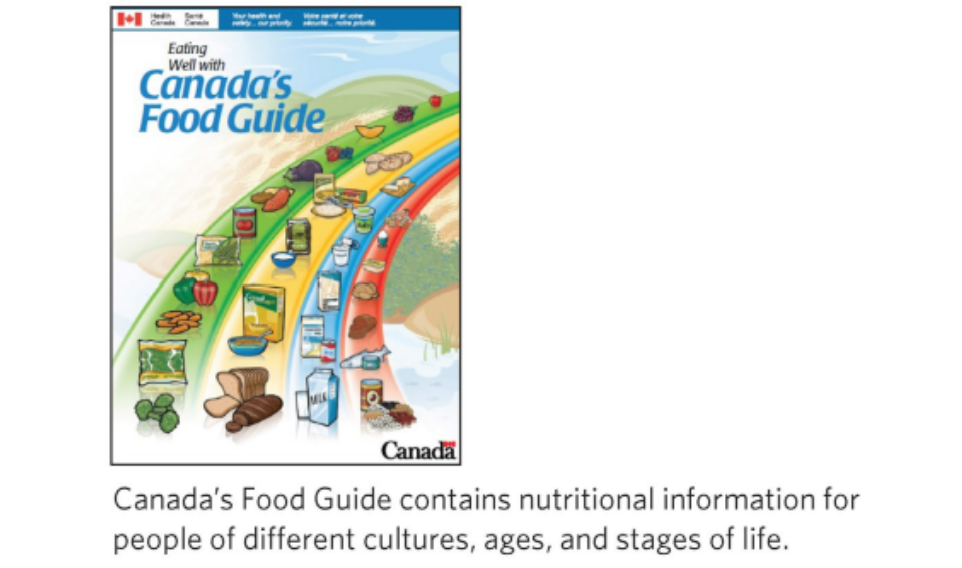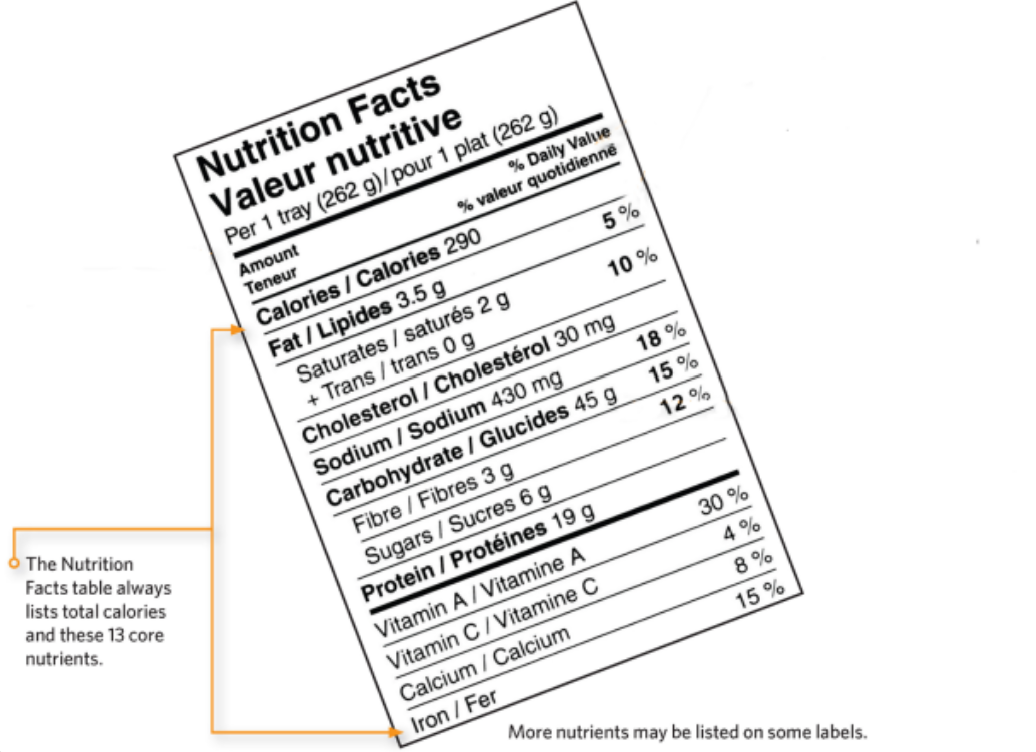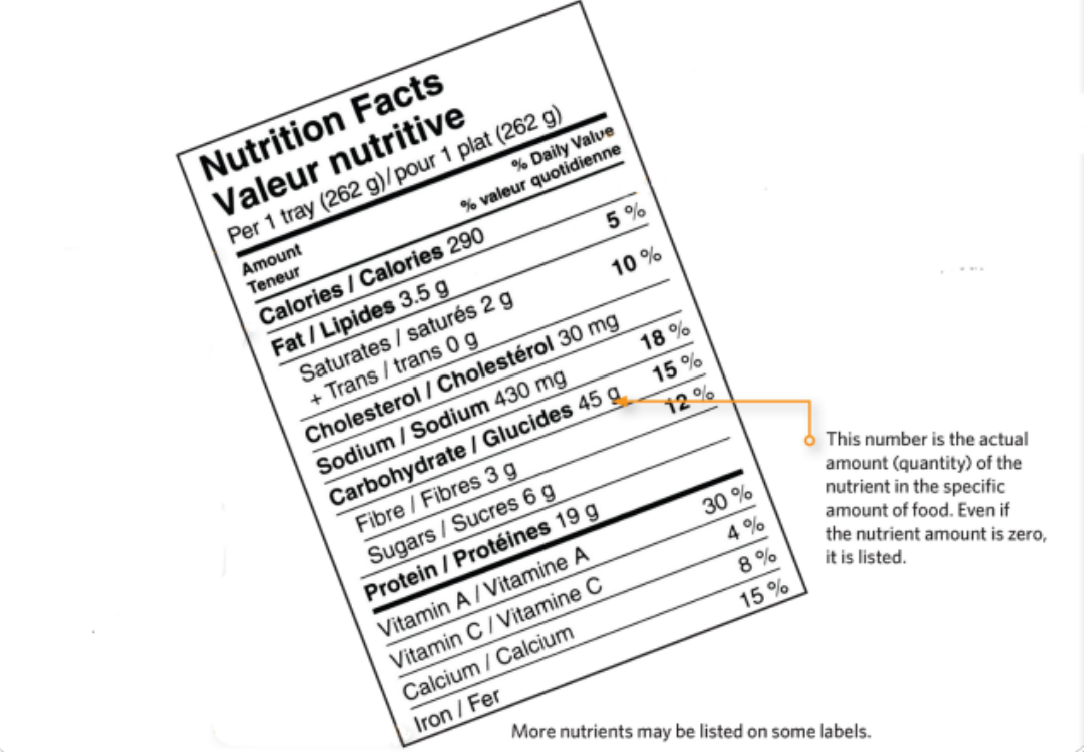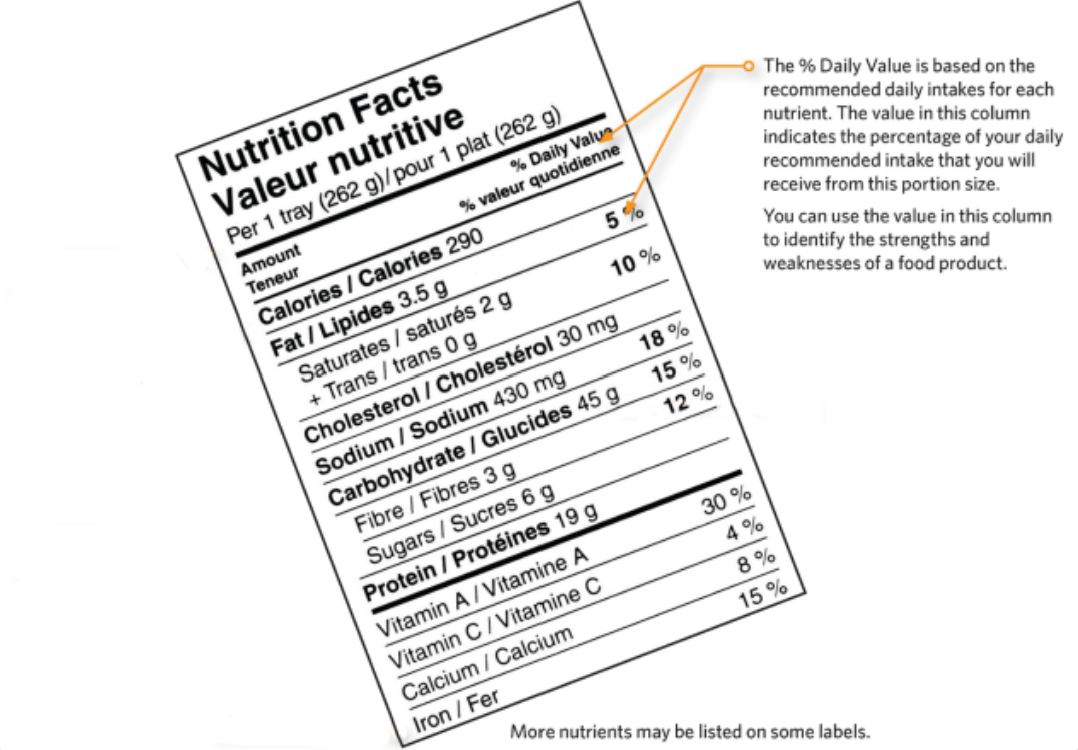
14.2 - Canada's Food Guide And Food Labelling
Promoting Canadians’ Nutritional Health
The federal department responsible for helping Canadians maintain and improve their health is Health Canada.
Canada’s first food guide, the Official Food Rules, was introduced to the public in July 1942.
Since 1942, the food guide has been transformed many times, yet has never wavered from its original purpose of guiding food selection and promoting the nutritional health of Canadians.
Canada’s Food Guide
The food intake pattern recommended in the most recent Canada’s Food Guide is based on current nutritional science.

Preventing Nutrient Deficiencies
Since 1938, Health Canada has provided recommendations as to how much of each nutrient we need to take in every day to stay healthy.
Dietary Reference Intakes (DRIs) are based on the amount of nutrients needed to prevent deficiencies.
A nutrient deficiency develops when we do not get enough nutrients for proper growth and good health
Ex: People can develop a disease called scurvy if they do not get enough vitamin C
Be Wary of Nutrient Content Claims
Manufacturers are permitted to use nutrient content claims, such as those below, to attract attention to their products.
Fat-free foods: Often foods that are fat-free contain a large number of calories due to increased amounts of sugars and carbohydrates added to improve the flavour.
Low-fat foods: Low-fat foods often contain a high simple sugar content.
The result is that people may not be consuming less energy, which is what determines weight gain (in the absence of exercise).
Light foods: Consumers must read food labels carefully to understand exactly how much energy is contained in the food item.
Nutrition Facts Tables on Food Products
A Nutrition Facts table appears in a standard format on food product labels.
The Nutrition Facts table is intended to present nutritional information in basically the same format from one product to another.
The main (core) ingredients are listed in the table.
Thesame 13 core nutrients are always listed in the same order.
A Nutrition Facts Table’s Standard Format

The Portion (Serving) Size of a Food Item

Total Calories and 13 Core Nutrients

The Actual Amounts of Nutrients

What Exactly is “% Daily Value”?
The % Daily Value Column of the Nutrition Facts table is based on the recommended intakes for each nutrient each day.
The value in this column indicates the percentage of your daily recommended intake that you will receive from this portion size.
You can use the % Daily Value information in this column to identify the strengths and weaknesses of a particular food product and whether it is suitable for you.
Note that the % Daily Value is based on an(average) 2000 Calorie per day diet, and so may vary from individual to individual.
% Daily Value on a Sample Product Label

Serving Size Matters
When reading labels, be especially vigilant when it comes to serving sizes.
Serving Sizes are determined by the food manufacturer and are sometimes very small compared to what people normally consume.
Therefore, make sure you read the label carefully to see how big the serving size is so that you can better understand the nutritional information on the label.
14.2 - Canada's Food Guide And Food Labelling
Promoting Canadians’ Nutritional Health
The federal department responsible for helping Canadians maintain and improve their health is Health Canada.
Canada’s first food guide, the Official Food Rules, was introduced to the public in July 1942.
Since 1942, the food guide has been transformed many times, yet has never wavered from its original purpose of guiding food selection and promoting the nutritional health of Canadians.
Canada’s Food Guide
The food intake pattern recommended in the most recent Canada’s Food Guide is based on current nutritional science.

Preventing Nutrient Deficiencies
Since 1938, Health Canada has provided recommendations as to how much of each nutrient we need to take in every day to stay healthy.
Dietary Reference Intakes (DRIs) are based on the amount of nutrients needed to prevent deficiencies.
A nutrient deficiency develops when we do not get enough nutrients for proper growth and good health
Ex: People can develop a disease called scurvy if they do not get enough vitamin C
Be Wary of Nutrient Content Claims
Manufacturers are permitted to use nutrient content claims, such as those below, to attract attention to their products.
Fat-free foods: Often foods that are fat-free contain a large number of calories due to increased amounts of sugars and carbohydrates added to improve the flavour.
Low-fat foods: Low-fat foods often contain a high simple sugar content.
The result is that people may not be consuming less energy, which is what determines weight gain (in the absence of exercise).
Light foods: Consumers must read food labels carefully to understand exactly how much energy is contained in the food item.
Nutrition Facts Tables on Food Products
A Nutrition Facts table appears in a standard format on food product labels.
The Nutrition Facts table is intended to present nutritional information in basically the same format from one product to another.
The main (core) ingredients are listed in the table.
Thesame 13 core nutrients are always listed in the same order.
A Nutrition Facts Table’s Standard Format

The Portion (Serving) Size of a Food Item

Total Calories and 13 Core Nutrients

The Actual Amounts of Nutrients

What Exactly is “% Daily Value”?
The % Daily Value Column of the Nutrition Facts table is based on the recommended intakes for each nutrient each day.
The value in this column indicates the percentage of your daily recommended intake that you will receive from this portion size.
You can use the % Daily Value information in this column to identify the strengths and weaknesses of a particular food product and whether it is suitable for you.
Note that the % Daily Value is based on an(average) 2000 Calorie per day diet, and so may vary from individual to individual.
% Daily Value on a Sample Product Label

Serving Size Matters
When reading labels, be especially vigilant when it comes to serving sizes.
Serving Sizes are determined by the food manufacturer and are sometimes very small compared to what people normally consume.
Therefore, make sure you read the label carefully to see how big the serving size is so that you can better understand the nutritional information on the label.